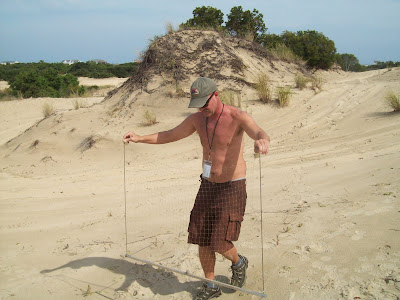
This one is bigger than boxes I have built in the past. I like it, but I don't know that the added weight is worth the increase in size.
This blog is intended to cover different aspects of falconry, birds, and the animals that affect my life.


 ticks, and I hate the spider webs breaking across your face.
ticks, and I hate the spider webs breaking across your face. up, landed briefly, then plummeted towards the ground again, disappearing from sight.
up, landed briefly, then plummeted towards the ground again, disappearing from sight.
Using hydrogen to power cars has become an increasingly attractive transportation fuel, as the only emission produced is water - but a major stumbling block is the lack of a cheap, renewable source of the fuel. Gerardine Botte of Ohio University may now have found the answer, using an electrolytic approach to produce hydrogen from urine—the most abundant waste on Earth—at a fraction of the cost of producing hydrogen from water.





Parahawking involves skydiving while specially-trained birds of prey swarm around you, including vultures, eagles, and falcons. Parahawking is available in Nepal courtesy of a bird rescue group called Himalayan Raptor Rescue."Our birds need to be rewarded for guiding us into the thermals. During the flight the passenger will place small morsels of meat onto his gloved hand, the birds will come and gently land on the hand to take the food, and then gracefully fly away to find the next thermal. A perfect symbiotic relationship."
Right. And if you are going, for God's sake take me with you!



Emily Fisher has a past-time more specialized that most.
She is into falconry, hand raising wild birds of prey, with a close relationship typical of a domestic pet, but with none of the cuddling.
“A raptor is not a cuddly pet, or a cool exotic thing to carry around. Without proper stimulation and activity they can be dangerous,” she says. “Also keep in mind they are strict carnivores, they eat raw meat, and they are hunters. If you can’t deal with killing prey and that side of it, falconry is not for you.” Her birds typically eat rabbits, ducks, or squirrels.
If you want a bird to be cool, or you think they are pretty, those reason's are not good enough. Raptors are not pets to be kept, they are predators that need to be hunted. If you have considered keeping a bird of you own, but don't want to hunt, stay away from falconry birds. Maybe a parrot would be better.






The Swedes, those latter-day descendants of bloodthirsty Vikings, have found a new use for rabbits: heating fuel. According to Der Spiegel, stray rabbits in Stockholm are being shot, frozen and then shipped to a heating plant to be incinerated.
In the Swedes' defense, the bunnies are a menace; a plague of wild and stray pet rabbits is devouring the city's parks. Some 3,000 have been killed thus far this year, down from 6,000 last year, Tommy Tuvunger, a professional hunter who works for the city, told the German news magazine.





 We were becoming discouraged with the air heating up inside and Andrew's head lolling on his neck from lack of sleep.
We were becoming discouraged with the air heating up inside and Andrew's head lolling on his neck from lack of sleep.



Non-avian dinosaurs are long extinct, but paleontological thinking about them, especially the dino–bird specimens, clearly continues to evolve long after they are discovered. For instance, the Anchiornis huxleyi, a small, feathered dinosaur, was described last December and assumed to be a transitional species that existed between dinosaurs and birds. But new evidence—and a much better specimen—has revealed that this ambiguous animal actually belongs to the dinosaur clan.

Peregrine falcons in New Hampshire produced 29 young this year, more than in any other breeding season during the past half-century.
Today we got our first kills!!
Yup, we took multiples our first time out. 6 or 7 in fact (I kinda lost count). Admittedly some were blatant muggings but he did take a couple right out of the air!
More electricity is already coming from solar and wind sources, so why not from switchgrass?
NRG Energy, a wholesale power generation company that operates in the United States, Australia and Germany, is experimenting with that possibility.








